.elementor-widget-text-editor.elementor-drop-cap-view-stacked .elementor-drop-cap{background-color:#818a91;color:#fff}.elementor-widget-text-editor.elementor-drop-cap-view-framed .elementor-drop-cap{color:#818a91;border:3px solid;background-color:transparent}.elementor-widget-text-editor:not(.elementor-drop-cap-view-default) .elementor-drop-cap{margin-top:8px}.elementor-widget-text-editor:not(.elementor-drop-cap-view-default) .elementor-drop-cap-letter{width:1em;height:1em}.elementor-widget-text-editor .elementor-drop-cap{float:left;text-align:center;line-height:1;font-size:50px}.elementor-widget-text-editor .elementor-drop-cap-letter{display:inline-block}
Cravings can derail even the most disciplined diet. And for many people, it’s not fried food or takeaways that knock them off track – it’s the need for something sweet.
That late-afternoon itch for chocolate. The “I deserve it” dessert after dinner. The snack that creeps in every time motivation dips.
Sugar cravings aren’t a sign of weakness. They’re a very real physiological and psychological response triggered by stress, sleep deprivation, hormone fluctuations, or overly restrictive dieting. And unless you’ve got a plan to deal with them, they’ll find a way to disrupt your results.
At Ultimate Performance, we’ve coached thousands of clients who’ve been through this. But while cravings might be a common problem, they can be overcome. The difference between those who get results and those who don’t often comes down to this: knowing how to manage urges when they hit – and having the right tools to minimise them in the first place, making it easier to stay on track.
What follows are nine proven strategies to stop sugar cravings in their tracks. These aren’t gimmicks or hacks. They’re grounded in evidence, built into our coaching, and used by clients around the world to get leaner, stay consistent, and make their results stick.
Why we get sugar cravings (and why some diets can make them worse)
Cravings for sugar don’t come out of nowhere. They’re often a signal – a symptom of something deeper going on in the body or brain.
Sometimes it’s physiological. Blood sugar crashes. A poor night’s sleep. Hormonal shifts. Even just not eating enough. All of these can nudge the brain into chasing fast energy, and sugar is the quickest route it knows.
Other times, cravings are habitual or emotional. (We dive deeper into how emotional eating patterns develop and how to stop them in this guide). Many of the clients we work with describe a pattern: they finish dinner, the day slows down, and they automatically reach for something sweet. It’s not hunger – it’s routine. Or a comfort habit built up over months or years.
Then there’s stress. The kind that wears people down at work, in relationships, or during change. Stress shifts hormone levels – particularly cortisol – and that creates a potent mix of physical and emotional hunger [1]. Most people don’t reach for chicken and broccoli when they’re stressed. They want sugar, because it’s fast, rewarding, and soothing.
Now layer in dieting. When someone slashes calories too hard, cuts out carbs entirely, or tries to go “cold turkey” with sugar, cravings will often spike. It’s not because they lack willpower – it’s because their body is wired for survival, and it fights back when energy availability drops too low [2].
So the key isn’t to white-knuckle your way through cravings. It’s to understand where they’re coming from – and then put simple strategies in place that stop them before they spiral.
This is exactly what you’ll learn in the next section…
9 ways to beat sugar cravings
1. Stay hydrated
It sounds basic, but dehydration is one of the most overlooked causes of cravings. When fluid levels drop, it can blur the brain’s hunger and thirst signals – leading people to eat when what they really need is water.
We see this often with clients who struggle in the afternoon. They’re not necessarily hungry. They’ve just not consumed enough water through the day. Their body starts flagging, their brain reaches for an energy fix, and the default choice becomes sugar.
Hydration helps fix that. Keeping fluid intake consistent – around 2.5 to 3.5 litres a day depending on body size and training – can prevent these false hunger signals and improve satiety.
It’s not just about the volume, either. Drinking water consistently across the day (not chugging it all in one go) keeps energy levels stable and supports digestion. And for those cutting calories, it’s one of the simplest tools to reduce unnecessary snacking.
One of our U.P. clients Sam explains how it helped during her transformation, saying “My biggest tip to control cravings is to drink lots of water, especially before your meals which helps to fill you up.”
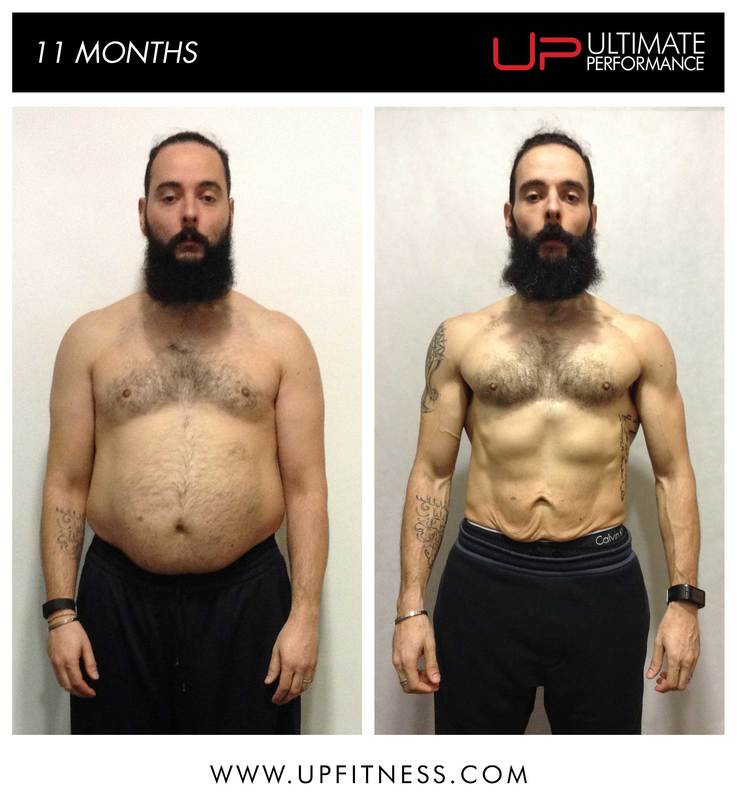
Read how dad Sam lost 55lbs after switching from marathon training to weights
2. Eat more fibre
Fibre is a powerful ally when it comes to curbing cravings. It slows digestion, steadies blood sugar, and keeps you fuller for longer – all of which help prevent the dips that can trigger sugar-seeking behaviour.
Vegetables are the go-to here. Not just because they’re low in calories, but because of their physical volume. A plate full of roasted veg, leafy greens, or stir-fried peppers takes up space in the stomach and creates a feeling of fullness without pushing calorie intake through the roof.
What we often see in low-adherence diets is this: people cut carbs, drop portion sizes, and end up with meals that barely satisfy. Hunger builds, cravings follow, and by day three, the wheels come off. Building in enough fibre – from vegetables, legumes, and whole foods – stops that cycle.
Aim to include at least one high-fibre food in every meal. It’s not sexy, but it works.
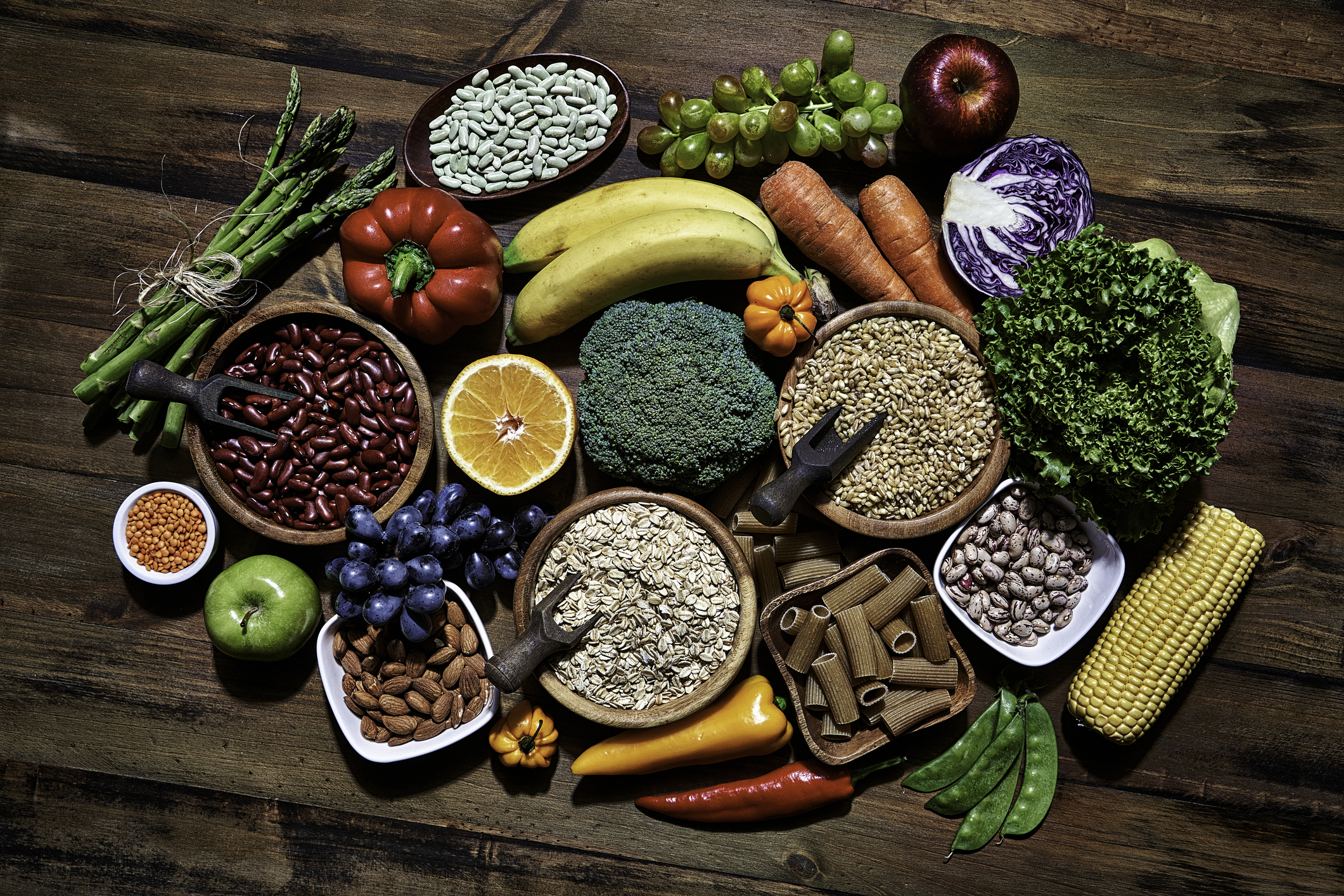
3. Prioritise protein at every meal
When clients first come to us, they often tell us they’re constantly battling cravings and struggle to stick to a diet. One of the first things we check is protein intake.
High-protein diets aren’t just about muscle maintenance. Protein is the most satiating macronutrient – meaning it helps you feel full and stay full [3]. It also has the highest thermic effect, with up to 30% of its calories burned during digestion [4], which supports fat loss dieting.
But beyond that, eating enough protein reduces the brain’s reward response to sugar. When people consistently hit 1.8–2.2g of protein per kg bodyweight per day, we see a dramatic drop in their reported urge to snack – particularly on sweet food.
If you want a practical fix for sugar cravings, start with this: get a quality protein source in every meal. Chicken, fish, steak, eggs, tofu, Greek yoghurt, protein shakes – whatever suits your setup. It’s one of the most consistent habits across all successful transformations we see at U.P. and one of our core nutrition principles we teach clients.

4. Try a fibre supplement like psyllium husk
For some people – especially those in a calorie deficit – food volume is the key to satiety. That’s where fibre supplements like psyllium husk can help.
Psyllium absorbs water and expands in the stomach, creating a feeling of fullness. It won’t eliminate cravings entirely, but it can take the edge off – particularly if someone struggles with portion control or snacking between meals.
We often suggest starting with 1–2 teaspoons per day mixed in water or added to shakes. Just be sure to increase water intake alongside it to support digestion.
It’s not a magic fix – but in combination with the right meals and structure, it can be one more tool to stop hunger morphing into sweet cravings.
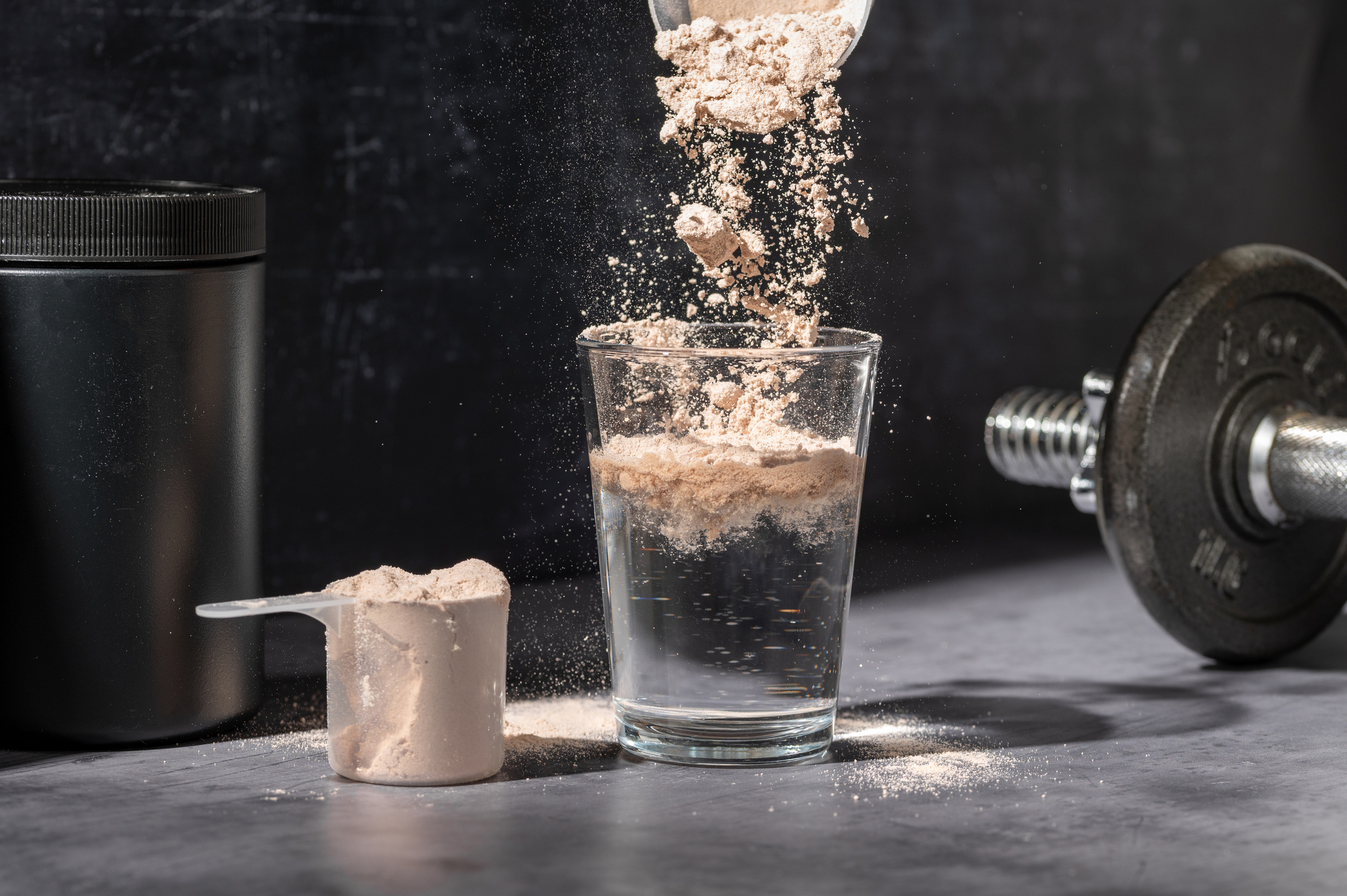
5. Use cinnamon to help stabilise blood sugar
Cinnamon isn’t just a nice flavour to sprinkle on oats. There’s evidence that it can help reduce blood sugar spikes and improve insulin sensitivity – both of which are tied to the intensity of cravings after meals [5]. (Here are more ways to improve your blood sugar and insulin sensitivity).
One study found that adding 6g of cinnamon to a carbohydrate-rich meal slowed gastric emptying and reduced post-meal blood glucose levels [5]. That means fewer peaks and crashes – and less of the rollercoaster that sends people reaching for sweets an hour later.
It’s not a silver bullet, but it’s easy to implement. Add it to your Greek yoghurt, your coffee, your protein oats – anywhere that would normally carry a bit of sweetness. It makes sweet-tasting food feel more satisfying and gives you a marginal metabolic edge.
And when you’re in a calorie deficit, small wins add up.
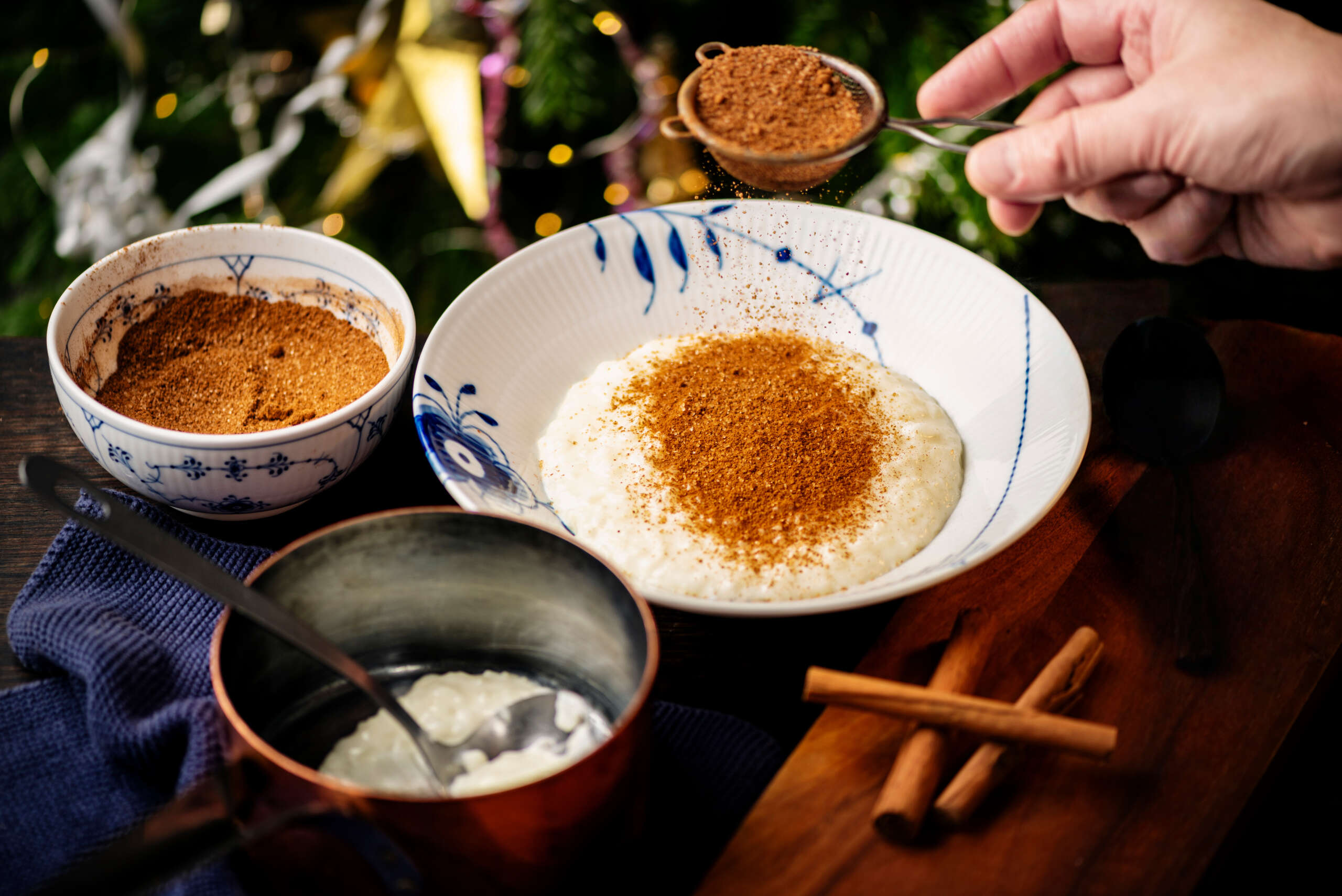
6. Have a fizzy drink (if it helps you stay on track)
This might sound counter-intuitive, but for some clients the difference between staying on track and falling off the waggon is having something sweet – without the sugar.
That’s where diet fizzy drinks come in. The bubbles help create satiety, the flavour satisfies a craving, and the calorie count stays at zero. In the context of fat loss, they’re often a better alternative to reaching for actual sweets or chocolate.
But recent research shows it’s not a completely neutral trade.
A 2023 brain imaging study found that sucralose (the common sweetener in many diet drinks) increased blood flow to the hypothalamus – the brain’s hunger centre – more than both sugar and water [6]. In other words, the body might register the sweet taste without the expected calorie input, creating a mismatch that can drive up hunger shortly after.
This effect was especially noticeable in people with obesity or lower insulin sensitivity – the very people most likely to be dieting and using diet drinks to manage cravings.
So what does that mean in practice?
It means that for some, diet sodas can help curb a craving in the moment. But for others, especially those dieting hard or struggling with consistency, it may backfire and leave them feeling hungrier soon after.
This is why we treat it as a tool – not a go-to strategy. If an occasional diet drink helps you bridge the gap between meals or avoid bingeing, great. But don’t rely on it day in, day out to mask cravings. It’s not solving the underlying issue. Alternatively, try drinking a carbonated water for a similar effect, without the porential for artificial sweetners causing cravings.
Clients who get the best long-term results focus on high-satiety meals, stable blood sugar, good sleep, and hydration. Diet drinks might support that occasionally. But they’re not the foundation.
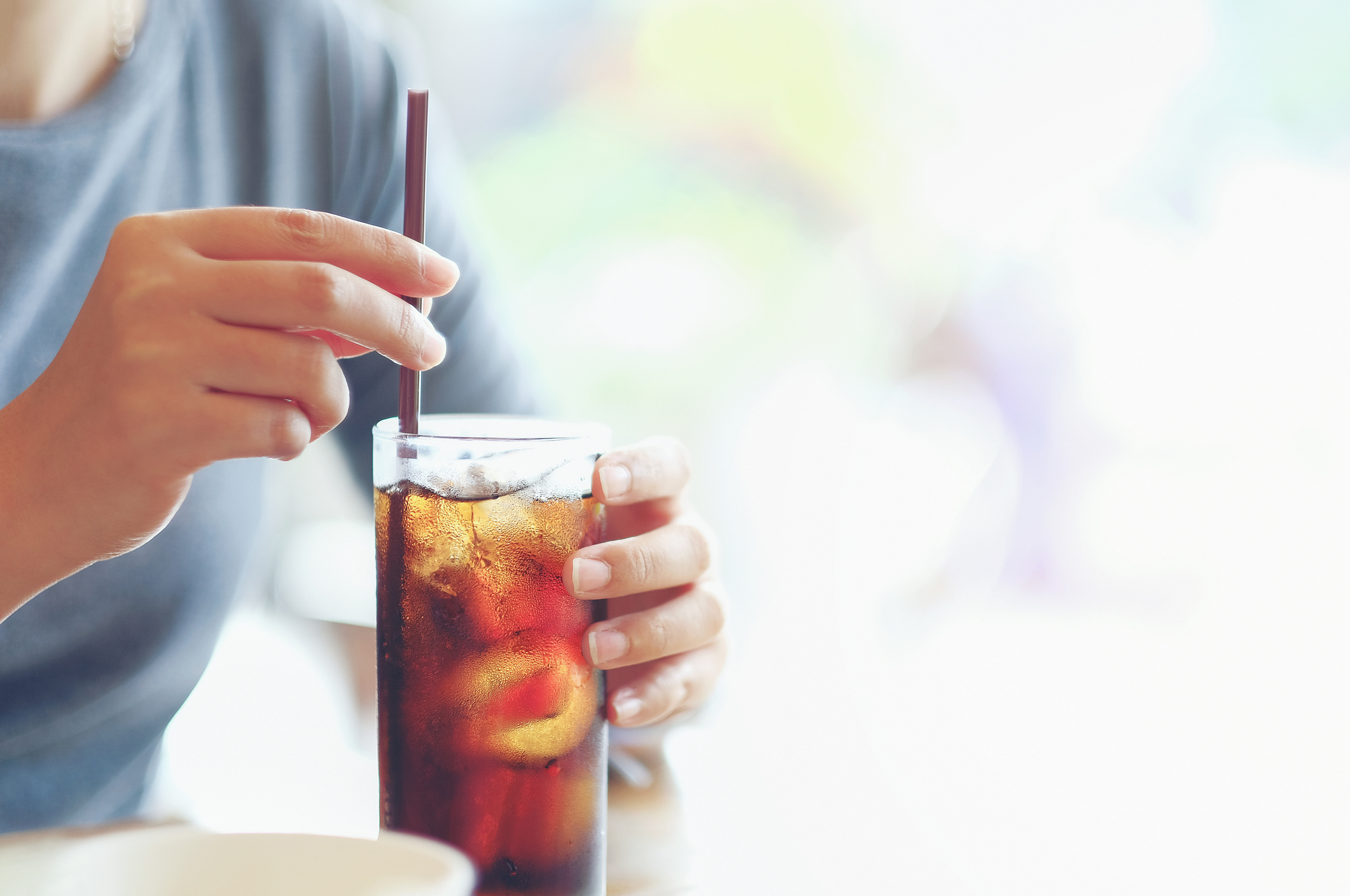
7. Move – even just a little.
One of the fastest ways to shut down a craving is to move.
That doesn’t mean hitting a full workout. Even a brisk 10-15 minute walk can have a surprising effect. In one study, overweight participants reported significantly reduced cravings after walking compared to when they stayed sedentary [7].
Movement changes brain chemistry. It lifts mood, increases dopamine, and shifts focus away from food. It also resets the environment – and for many people, that physical break in routine is what snaps the craving loop.
We’ve seen this work for clients in high-stress jobs. Instead of heading to the kitchen after a tough call, they walk the block or hit a few sets of bodyweight exercises. It’s enough to change state – and that often makes all the difference. If there are times you particularly struggle with cravings and the lure of the fridge, such as in the evenings, shift your routine, and go for a late walk or workout. It can get your mind away from it and help break the habit.
As Jenny, one of our U.P. transformation clients, puts it: “If I was craving sugar … the best things I found to do were to brush my teeth, chew some gum or just do something to distract myself like going for a run.”
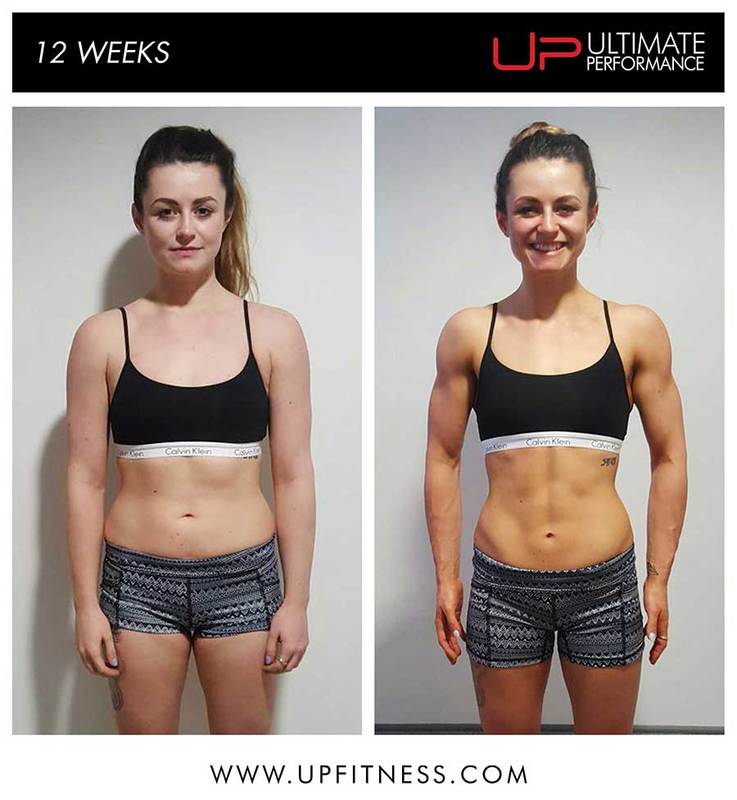
Read how professional chef Jenny built her lean and athletic physique in 12 weeks
8. Prioritise sleep like it’s part of your diet
One bad night of sleep can spike cravings the next day – especially for sugar.
Sleep deprivation disrupts key hunger hormones like ghrelin and leptin, increases stress hormones like cortisol, and leads to poorer impulse control [10]. That’s a perfect storm for craving fast energy, comfort food, or “just one biscuit” that turns into four.
Studies have shown that people who sleep just 4–5 hours a night experience stronger cravings and make worse food choices the next day [10]. And in the context of dieting, that can make the difference between staying compliant and falling short.
This is why we treat sleep as a non-negotiable in client transformations. Getting 7–9 hours consistently might not sound like a diet hack, but it plays a huge role in curbing the cravings that derail fat loss.

9. Eat regularly and plan ahead
Most people don’t break their diet because of logic – they break it because of low blood sugar, low energy, or poor preparation.
Cravings often hit hardest when meals are skipped or delayed. Blood sugar dips, hunger hormones surge, and suddenly the idea of a proper meal feels a million miles away compared to something quick and sweet.
That’s where regular eating comes in. It doesn’t mean grazing constantly or eating by the clock. It means having a rhythm to your meals that keeps energy stable, hunger in check, and choices deliberate.
For many clients, that means eating every 3–5 hours – with meals built around protein, fibre, and whole foods. Not because that timing is magic, but because it avoids the trap of getting too hungry and making poor choices.
The other piece is planning. When meals are prepped – or at least mentally mapped out – there’s far less friction in choosing the right thing. The default becomes the goal-aligned option, not whatever’s quickest or closest.
Cravings thrive on gaps. They show up when structure breaks down. Eating regularly and staying one step ahead doesn’t eliminate the urge for something sweet – but it gives you far more control when it does come knocking.
Our client Arthur explains how he used this tip practically to keep him on track to achieving his transformation goal at U.P., saying: “I found it best to space my meals out in 3-4-hour gaps. So I’d have a meal in the morning, then another at 12 noon and then have dinner 3-4 hours later.
“If you’re going to eat all your day’s meals before lunch, you will be left hungry and craving sugar foods for the rest of the day.”

Read how Arthur got shredded in just 12 weeks at Ultimate Performance
Real questions people ask about sugar cravings (FAQ)
Will I always crave sugar on a diet?
Not necessarily. But if the diet is too restrictive, unbalanced, or inconsistent, sugar cravings will keep showing up.
Most people notice cravings decrease significantly within 2–3 weeks once they start eating enough protein, staying hydrated, getting better sleep, and reducing ultra-processed food intake. The more structured and nutrient-dense your meals, the less reactive your brain and body become to “quick fix” foods.
That said, for some people, the urge never disappears entirely – it just becomes manageable. And that’s the real goal. Not to eliminate every craving, but to respond to them with habits that align with your goals.
Is sugar addiction real?
The idea of being addicted to sugar is controversial. Most researchers agree that sugar doesn’t meet the clinical definition of addiction in the same way as substances like drugs or alcohol. But the behaviours around sugar – compulsive eating, loss of control, reward-seeking – can feel very real.
There’s growing evidence that for certain people, especially those with high stress levels, disrupted sleep, or poor dietary structure, sugar does activate reward pathways in the brain in a way that mimics addiction-like responses [8].
The key point? Whether it’s technically an addiction or not, the impact is the same. It can feel overwhelming. Which is why managing environment, habits, stress, and sleep is so important — not just relying on willpower.
What can I eat instead of sugar when a craving hits?
Start by asking: are you genuinely hungry, or just craving something sweet?
If it’s hunger – eat a proper meal or snack with protein and fibre. That’s always going to beat nibbling through low-calorie snacks and ending up unsatisfied.
If it’s purely psychological or emotional, here are some better alternatives to reach for:
- A protein shake or bar
- Greek yoghurt with berries and cinnamon
- A handful of nuts or nut butter on apple slices
- A fizzy flavoured water or herbal tea
- A square of high-cocoa dark chocolate (if it doesn’t trigger a binge)
Sometimes it’s less about the food itself and more about disrupting the loop. A walk, a call, brushing your teeth – anything that breaks the state helps reduce that craving momentum.
Is it okay to have fruit or a diet soda if I’m trying to stop sugar cravings?
Yes – with a caveat.
Fruit is absolutely fine for most people, and often a smart way to handle cravings. It provides fibre, vitamins, and water content, which are all helpful in fat loss. Just be aware of portion control if calories matter.
Diet sodas, as covered earlier, can go either way. They help some clients manage cravings. But for others – particularly those with obesity or poor blood sugar control – artificial sweeteners like sucralose may actually increase hunger due to how the brain responds to sweet taste without calories [6].
The takeaway? Use these tools if they work for you. But don’t build your diet around them. Whole foods, protein, and proper structure will always do more of the heavy lifting.
Why are cravings worse at night or around my period?
Cravings spike in the evening because of a few simple reasons:
- You’re tired – and impulse control drops
- You’ve probably restricted all day – and your brain is looking for a reward
- Your environment cues you (TV, phone, kitchen lights, habit loops)
If the day’s structure hasn’t supported stable energy, the night becomes vulnerable. That’s why regular meals and adequate sleep are such game-changers.
Around menstruation, cravings – especially for carbs and sugar – are driven by hormonal fluctuations. Drops in oestrogen and serotonin during the luteal phase can increase appetite and make the body crave fast-reward foods [9]. (A full guide to how your menstrual cycle can impact your diet and nutrition can be found here).
This isn’t a lack of discipline. It’s biology. Which means planning ahead – slightly increasing food volume or including more slow-digesting carbs – can be enough to keep things under control.
Final thought: get back in control of your diet
Cravings aren’t a failure of willpower. They’re a message – from your body, your habits, or your environment – that something’s out of balance.
For some, it’s poor sleep. For others, it’s under-eating during the day. Sometimes it’s just routine – finishing dinner, sitting on the sofa, and letting the brain drift to chocolate. We see it in new clients all the time.
But here’s the good news: cravings can be beaten. Not by going cold turkey. Not by banning all sugar. But by putting in place a few smart, consistent strategies – the kind that improve your structure, steady your energy, and reduce those sudden urges that pull you off course.
We’ve helped thousands of clients get results while still dealing with cravings – because the goal isn’t perfection. It’s consistency. And when you have the right tools, the right plan, and a bit of coaching support, those cravings lose their power.
Need help beating cravings for good? Talk to a trainer who’s helped hundreds do exactly that – and build a body transformation that lasts.
References
- Chao, A. M., Jastreboff, A. M., White, M. A., Grilo, C. M., & Sinha, R. (2017). Stress, cortisol, and other appetite-related hormones: Prospective prediction of 6-month changes in food cravings and weight. Obesity (Silver Spring), 25(4), 713–720. PMID: 28349668. (pubmed.ncbi.nlm.nih.gov)
- .Sumithran, P., Prendergast, L. A., Delbridge, E., Purcell, K., Shulkes, A., Kriketos, A., & Proietto, J. (2011). Long-term persistence of hormonal adaptations to weight loss. New England Journal of Medicine, 365(17), 1597–1604. PMID: 22029981. (pubmed.ncbi.nlm.nih.gov)
- Weigle, D. S., Breen, P. A., Matthys, C. C., Callahan, H. S., Meeuws, K. E., Burden, V. R., & Purnell, J. Q. (2005). A high-protein diet induces sustained reductions in appetite, ad libitum caloric intake, and body weight despite compensatory changes in diurnal plasma leptin and ghrelin concentrations. American Journal of Clinical Nutrition, 82(1), 41–48. PMID: 16002798. (pubmed.ncbi.nlm.nih.gov)
- Johnston, C. S., Day, C. S., & Swan, P. D. (2002). Postprandial thermogenesis is increased 100% on a high-protein, low-fat diet versus a high-carbohydrate, low-fat diet in healthy, young women. Journal of the American College of Nutrition, 21(1), 55–61. PMID: 11838888. (pubmed.ncbi.nlm.nih.gov)
- Hlebowicz, J., Darwiche, G., Björgell, O., & Almér, L.-O. (2007). Effect of cinnamon on postprandial blood glucose, gastric emptying, and satiety in healthy subjects. American Journal of Clinical Nutrition, 85(6), 1552–1556. PMID: 17556692. (pubmed.ncbi.nlm.nih.gov)
- Chakravartti, S. P., Jann, K., Veit, R., Liu, H., Yunker, A. G., et al. (2025). Non-caloric sweetener effects on brain appetite regulation in individuals across varying body weights. Nature Metabolism, 7(3), 574–585. PMID: 40140714. (pubmed.ncbi.nlm.nih.gov)
- Ledochowski, L., Ruedl, G., Taylor, A. H., & Kopp, M. (2015). Acute effects of brisk walking on sugary snack cravings in overweight people, affect and responses to a manipulated stress situation and to a sugary snack cue: A crossover study. PLOS ONE, 10(3), e0119278. PMID: 25760042. (pubmed.ncbi.nlm.nih.gov)
- Gearhardt, A. N., Yokum, S., Orr, P. T., Stice, E., Corbin, W. R., & Brownell, K. D. (2011). Neural correlates of “food addiction”. Archives of General Psychiatry, 68(8), 808–816. PMID: 21464344. (pubmed.ncbi.nlm.nih.gov)
- Reed, S. C., Levin, F. R., & Evans, S. M. (2008). Changes in mood, cognitive performance and appetite in the late luteal and follicular phases of the menstrual cycle in women with and without PMDD. Hormones and Behavior, 54(1), 185–193. PMID: 18413151. (pubmed.ncbi.nlm.nih.gov)
- Spiegel, K., Tasali, E., Penev, P., & Van Cauter, E. (2004). Brief communication: Sleep curtailment in healthy young men is associated with decreased leptin levels, elevated ghrelin levels, and increased hunger and appetite. Annals of Internal Medicine, 141(11), 846–850. PMID: 15583226. (pubmed.ncbi.nlm.nih.gov)
The post How to Stop Sugar Cravings on a Diet: 9 Proven Strategies That Work appeared first on Ultimate Performance Blog.


